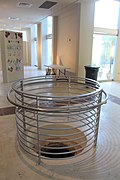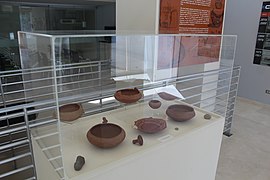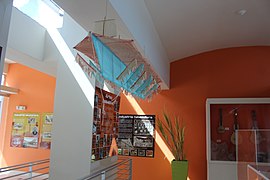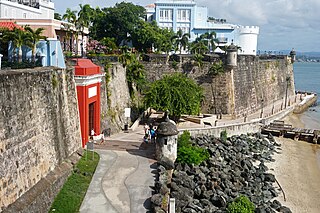
San Juan is the capital city and most populous municipality in the Commonwealth of Puerto Rico, an unincorporated territory of the United States. As of the 2020 census, it is the 57th-largest city under the jurisdiction of the United States, with a population of 342,259. San Juan was founded by Spanish colonists in 1521, who called it Ciudad de Puerto Rico.

Dorado is a town and municipality on the northern coast of Puerto Rico, 15 miles (24 km) west of San Juan and is located in the northern region of the island, bordering the Atlantic Ocean, north of Toa Alta, east of Vega Alta, and west of Toa Baja. Dorado is subdivided into five barrios and Dorado Pueblo. It is part of the San Juan-Caguas-Guaynabo Metropolitan Statistical Area. During the early 18th century, there were already mentions of a "Sitio de Dorado" in some San Juan registers. Since the beginning of the Spanish colonial period and until 1831, Dorado existed as a barrio of the town of Toa Baja. Over several years, the ward grew and established its own town center called the "new pueblo" to differentiate itself from Toa Baja, which became known as the "old pueblo." Over several years, the barrios that currently make up Dorado grew and the people of the "new pueblo" wanted to separate themselves from Toa Baja.

Canóvanas is a town and municipality in Puerto Rico, located in the northeastern region, north of Juncos and Las Piedras; south of Loíza; east of Carolina; and west of Río Grande. Canóvanas is spread over 6 barrios and Canóvanas Pueblo. It is part of the San Juan-Caguas-Guaynabo Metropolitan Statistical Area.

Vega Baja is a town and municipality located on the coast of north central Puerto Rico. It is north of Morovis, east of Manatí, and west of Vega Alta. Vega Baja is spread over 14 barrios. The population of the municipality was 54,414 at the 2020 census. It is part of the San Juan–Caguas–Guaynabo metropolitan statistical area.

The Tibes Indigenous Ceremonial Center in Sector La Vega de Taní, Barrio Tibes, Ponce, Puerto Rico, houses one of the most important archaeological discoveries made in the Antilles. The discovery provides an insight as to how the indigenous tribes of the Igneri and Taínos lived and played during and before the arrival of Christopher Columbus to the New World. Tibes is the oldest Antillean Indian ceremonial and sports complex yet uncovered in Puerto Rico. Within its boundaries is also the largest indigenous cemetery discovered to date – consisting of 186 human skeletons, most from the Igneri and the rest from the pre-Taíno cultures. Based on the orientation of the ceremonial plazas, this is also believed to be the oldest astronomical observatory in the Antilles. The museum was established in 1982 and restored in 1991.

Caparra is an archaeological site in the municipality of Guaynabo, Puerto Rico. It was declared a U.S. National Historic Landmark in 1994. The site contains the remains of the first Spanish capital of the island, settled in 1508 and abandoned in 1521. It represents the oldest known European settlement on United States territory.

Casa Alonso is a house museum and cultural center in Vega Baja Pueblo, the historic downtown of the municipality of Vega Baja, Puerto Rico. It was listed on the National Register of Historic Places in 1996. The house is also known as Museo de Arte, Historia y Cultura Casa Alonso, administered by the municipality of Vega Baja.

The Museo de la Historia de Ponce is a local history museum located in the historic Casa Salazar-Candal in the city of Ponce, Puerto Rico. The museum depicts the city's ecology, economy, architecture, government, and elements of daily life. It seeks to promote the research, conservation, and dissemination of the historic heritage of Ponce and Puerto Rico.

Casa Paoli is a historic house and biographical museum in barrio Cuarto, Ponce, Puerto Rico, in the Ponce Historic Zone. The house is significant as the birthplace of Antonio Paoli (1871–1946), a tenor who was the "first Puerto Rican to reach international recognition in the performing arts" and "one of the most outstanding opera singers of all times". The house was the childhood home of the artist and he was introduced to art and opera at this house during his formative years. In 1987, the house was turned into a museum to honor the career of Antonio Paoli. The building was listed on the U.S. National Register of Historic Places in 2009.

The Museo de la Música Puertorriqueña is a museum in Ponce, Puerto Rico, that showcases the development of Puerto Rican music, with displays of Taíno, Spanish, and African musical instruments that were played in the romantic danza genre, the favorite music of 19th-century Puerto Rican high society, as well as the more African-inspired bomba and plena styles. Also on display are memorabilia of composers and performers. The Museum traces the rich musical history of Puerto Rico through memorabilia of prominent musicians and displays of the musical instruments associated with the three genres of music that originated in this Caribbean island.

Casa Rosita Serrallés is a historic building in the city of Ponce, Puerto Rico, located between the former Escuela Libre de Música Juan Morel Campos and the Museo de la Historia de Ponce, and immediately behind Teatro La Perla, on Calle Salud street. It was built for one of the heirs of Juan Eugenio Serrallés Perez, son of businessman Juan Serrallés Colón, founder of Destilería Serrallés, and himself the CEO of the company that founded Ron Don Q. The building was purchased by the government of the Autonomous Municipality of Ponce in 2008 for its architectural, historic, and cultural value. As of February 2012, the building was being restored to convert it into an annex of the Museo de la Historia de Ponce to depict the 1985 Mameyes tragedy of barrio Portugues Urbano in Ponce. In 2014 it opened as "Museo de la Recordacion Barrio Mameyes" under Ponce mayor María Meléndez at Calle Salud 67. It is also known as "Sala Memorial del Barrio Mameyes" as it operates as a part of the Museo de la Historia de Ponce.

Vega Baja barrio-pueblo is a barrio and downtown area that serves as the administrative center (seat) of Vega Baja, a municipality of Puerto Rico. Its population in 2010 was 816.

Caguas Pueblo is a barrio and downtown area that serves the administrative center (seat) of the city and municipality of Caguas, a municipality of Puerto Rico. It is bordered by the Cagüitas River to the north and located two miles southwest of the Río Grande de Loíza. Its population in 2020 was 20,008.
The Caguas City Hall consists of two buildings located in the downtown area of Caguas, Puerto Rico.
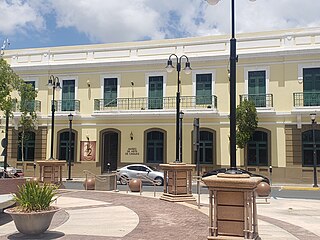
The Caguas Museum of Art is an art museum in Caguas Pueblo, the downtown and administrative district of the municipality of Caguas, Puerto Rico. The first level of the museum is dedicated to Caguas native painter Carlos Osorio and the second level offers temporary exhibitions. The entrance is free and guided tours are available. The museum also host cultural events.

The Rosario Canales house is a museum dedicated to founder and first mayor of Jayuya Rosario Canales in Coabey, in the municipality of Jayuya, Puerto Rico. The museum grounds also contain the El Cemí Museum and views of Los Tres Picachos mountain on the Cordillera Central.

The Jesús T. Piñero House and Museum, often called the Pink House, is a historic house located along PR-3 just outside of Canóvanas Pueblo in the municipality of Canóvanas, Puerto Rico.
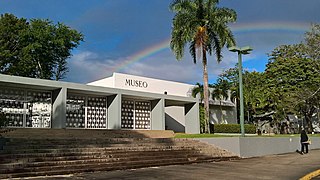
The Museum of History, Anthropology and Art of the University of Puerto Rico — often shortened to Museum of the UPR or MAHA — is a university museum dedicated to anthropology, archaeology and the history of art of Puerto Rico located on the grounds of the University of Puerto Rico, Río Piedras Campus. Officially dating to 1951, this museum is the oldest in Puerto Rico with its first collection being even older dating to 1914, donated by then Resident Commissioner Federico Degetau.

The Church Santa María del Rosario of Vega Baja is a historic Catholic parish church from 1860 located in the main public square (plaza) of Vega Baja Pueblo, the historic and cultural downtown of the municipality of Vega Baja, Puerto Rico. The parish, which is part of the Roman Catholic Diocese of Arecibo, was added to the United States National Register of Historic Places in 1984 as part of the Historic Churches of Puerto Rico thematic multiple property submission.



